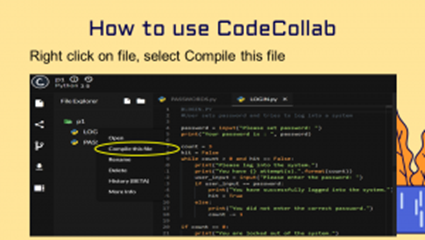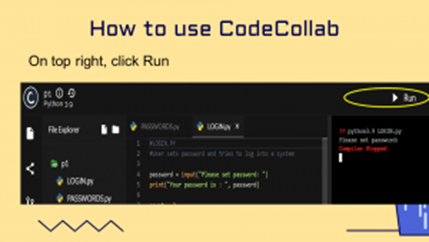Three Tips for A Successful Online Collaborative Learning Experience
It has been over two years since the start of the COVID-19 pandemic. Like other educators, I had to evaluate my pedagogical and technological skills, and prepare myself to learn, unlearn and re-learn in these areas in order to meet the needs of home-based
and blended learning. What was a traditional group work setting in a face-to-face classroom could no longer be carried out with the implementation of safe management measures. Plans for group work in physical classrooms had to be either shelved or
modified while teachers adjusted to the new normal of online learning, which called for a very different set of tools, skills, and expectations.
During a school workshop that we conducted last year, a teacher in my school raised the question of how teachers could be better at carrying out effective collaborative work online. Reflecting on that teacher’s question, I would like to share with
you a few tips that I gained from my experience in carrying out online collaborative learning that could be useful to try out as blended learning prevails.
Co-Construct and Communicate Expectations of Group Work
Learners need to be taught the norms of collaboration and how each of them can contribute to the overall work as a group before the online lesson even
begins. This is even more important if the groups had not already been established in the physical classrooms. Make sure that learners are clear of their individual roles and what is to be expected from them in each of these roles.
Student agency is defined as the capacity to set a goal, reflect, and act responsibly to effect change (OECD, n.d.). You may also want to consider allowing learners to choose their own role in a group. Once learners are used to the group setup,
it becomes a lot easier for collaboration to take place in subsequent lessons. Rotation of roles then becomes possible as well. Another aspect of student agency is to co-construct ground rules with them about their expectations of online learning.
This will shift the ownership of how to behave responsibly in an online environment to the learners themselves.

Figure 1. Group Work expectations are explained clearly. These can be co-constructed with learners for greater student agency.

Figure 2. Explaining the norms of collaboration to learners.
Monitor the Learning Process
Backchannel communication is a secondary conversation that takes place at the same time as a main conversation such as a teacher-led learning activity or a lecture. A backchanneling tool is thus instrumental in helping teachers to monitor the learning
process and to address clarifications quickly when needed. In almost all of the web conferencing tools that are available, there are built-in chat functions that can be used to monitor discussions and to provide real-time feedback. Google Documents
can also be used as a quick way to capture student queries.
During an online lesson, learners could be encouraged to type their responses into these tools in addition to having verbal discussions. After the lesson is over, the transcript can be downloaded and previewed to assess their understanding. This serves
as evidence of their learning, which can be used to inform future instruction. One key thing to remember is that the instruction does not end after the online lesson is over. Technology serves as a great way to monitor learning both real-time and
post-lesson.
Provide Scaffolds
You may also provide short user guides or video walkthroughs of the tool to familiarise your learners with its usage. The key idea is to enhance their usability of their tool and make sure that they are comfortable with it.
Are there short pre-lesson activities that learners can complete before attending the online lesson? This ensures that learners come to the planned activity informed of the task context or requirements, and are ready to make a meaningful contribution
while online.



Figure 3. Short technical guide on familiarising learners with the programming tool.
A successful online collaborative learning experience requires careful planning and preparation. The choice of using the right tools to support online collaboration is also the crux to a successful lesson. In my experience, I have had a few hits and misses
with online collaborative learning. But I’m certain that by reflecting on each lesson, I gain a better grasp of my learners and will be able to build a better learning experience in time to come.
Reference
OECD (n.d.). Student Agency for 2030. https://www.oecd.org/education/2030-project/teaching-and-learning/learning/student-agency/in_brief_Student_Agency.pdf
April 2022
Contributed by Ho Wei Sin, Teacher of Computing and English, from Maris Stella High School (Secondary), for SingTeach Virtual Staff Lounge.
This article is originally from SingTeach.